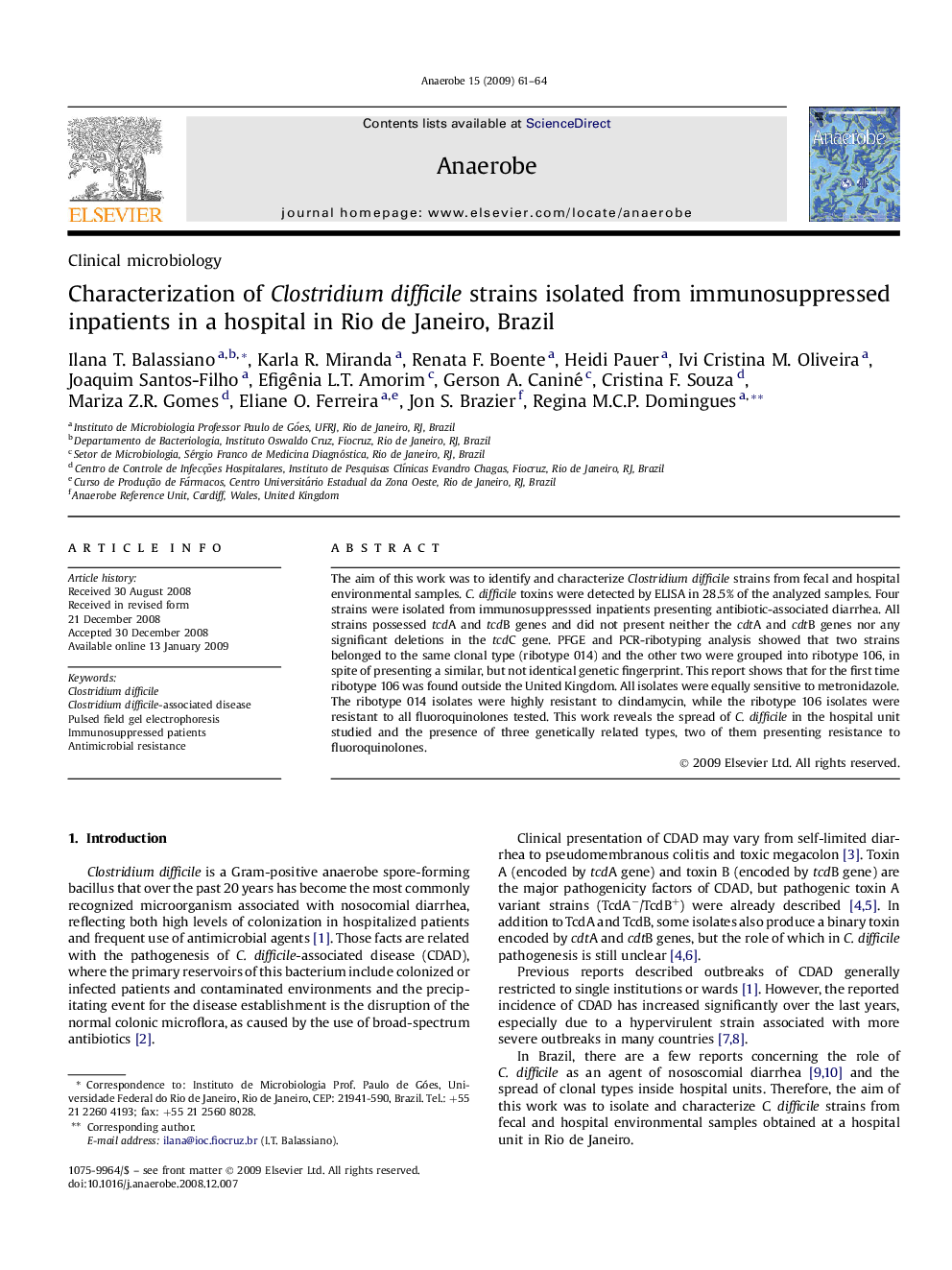| Article ID | Journal | Published Year | Pages | File Type |
|---|---|---|---|---|
| 3395821 | Anaerobe | 2009 | 4 Pages |
The aim of this work was to identify and characterize Clostridium difficile strains from fecal and hospital environmental samples. C. difficile toxins were detected by ELISA in 28.5% of the analyzed samples. Four strains were isolated from immunosuppresssed inpatients presenting antibiotic-associated diarrhea. All strains possessed tcdA and tcdB genes and did not present neither the cdtA and cdtB genes nor any significant deletions in the tcdC gene. PFGE and PCR-ribotyping analysis showed that two strains belonged to the same clonal type (ribotype 014) and the other two were grouped into ribotype 106, in spite of presenting a similar, but not identical genetic fingerprint. This report shows that for the first time ribotype 106 was found outside the United Kingdom. All isolates were equally sensitive to metronidazole. The ribotype 014 isolates were highly resistant to clindamycin, while the ribotype 106 isolates were resistant to all fluoroquinolones tested. This work reveals the spread of C. difficile in the hospital unit studied and the presence of three genetically related types, two of them presenting resistance to fluoroquinolones.
